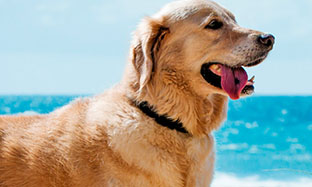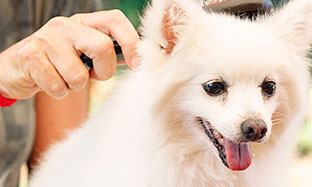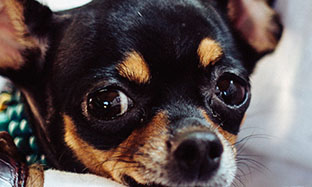 (1) (1) (1) (1)-min.jpg)
How to Deal with Dog Separation Anxiety
It is a heart-breaking scene; after a short time away from home, you return to a dog that is wet from drool, trembling, and wide-eyed with fear. There is a mess by the door, and the TV remote and couch cushions are chewed to bits. It is clear that you are dealing with more than just typical canine mischief. This is a case of a dog with separation anxiety, which can cause extreme stress for your furry friend and you.
Understanding Dog Separation Anxiety
Separation anxiety is a stress response that a dog exhibits when they are away from the person (or people) that they are bonded to. It is akin to a panic attack in humans, where stress hormones flood the body, leading to various distressing behaviours. Dogs with separation anxiety may exhibit anything from mild distress, like pacing and whining, to extreme anxiety resulting in self-injury when attempting to escape confinement.
Several factors can contribute to the development of separation anxiety in dogs. Traumatic events or environmental changes, such as changes in the family dynamic, lifestyle, or routine, can trigger this challenging response. While some dogs may have a history of trauma, others may develop separation anxiety due to underlying genetic predispositions.
Identifying Dog Anxiety
It is crucial to differentiate separation anxiety from other behavioural or medical issues. Excessive drooling, barking, destruction, elimination, and escape attempts are common signs, but they might also have alternative explanations. A veterinary exam is essential to rule out illnesses or other dog behavioural problems before addressing separation anxiety.
Dogs suffering from separation anxiety often learn pre-departure cues and exhibit stress responses even before their person leaves. Identifying these signs is the first step in understanding and addressing separation anxiety in dogs.
How to Calm a Dog with Separation Anxiety
The goal in treating separation anxiety is twofold: helping your dog feel less reliant on you and encouraging their ability to relax when you are away. It’s a complex process that requires time, patience, and often the guidance of a professional, such as a certified separation anxiety trainer (CSAT) or a veterinary behaviourist.
Dog Training Tips to Alleviate Separation Anxiety
Establish Boundaries: Do not allow your dog to follow you from room to room constantly. Introduce alone time gradually, helping them learn to be comfortable by themselves.
Avoid Clinginess: Detach mentally and occupy yourself with activities that do not involve your dog. This helps them understand that being alone is a natural part of life.
Provide Alone Time: Ensure your dog has a few hours every day to be by themselves, fostering independence and mental well-being.
Quality Time Over Quantity: Spend positive, creative time with your dog. Engage in games, training, and activities that strengthen your bond without being constantly available.
Teach Relaxation Commands: Train your dog to go to a designated place and relax. Gradually increase the time they stay there, building confidence in being alone.
Read Signs of Stress: Learn to recognize when your dog is getting anxious and when they are calm. This awareness is crucial in managing separation anxiety.
Reduce General Stress: Identify triggers that induce stress in your dog. Try to minimize these stressors on the whole as a stressed dog is more likely to become anxious when left alone.
Build Confidence: Engage in scenting games, positive training, and activities that boost your dog’s confidence. Confident dogs tend to be more secure about being alone.
Remember, a dog’s difficult behaviour is not deliberate, and hence yelling or punishing your dog is ineffective and inappropriate. Understanding and patience are key components in addressing separation anxiety.
Additional Strategies
Avoid Long Alone Times: During the training process, never leave your dog alone for extended periods. Enlist the help of neighbours, friends, family members, dog walkers, or daycare to manage extended absences.
Regular Exercise: Increase your dog’s exercise, particularly if they exhibit mild separation intolerance. Mental and physical stimulation before leaving can help them settle during your absence.
Interactive Toys: Provide toys that engage your dog’s mind and keep them occupied. However, be cautious with food toys, as they can become a cue for impending isolation and induce panic.
Conclusion
Dealing with dog separation anxiety requires dedication, understanding, and consistent effort. By addressing the root causes, providing proper training, and incorporating strategies to alleviate stress, you can help your dog overcome separation anxiety. Remember, a calm and confident dog contributes to a harmonious and happy relationship between you and your furry friend.



